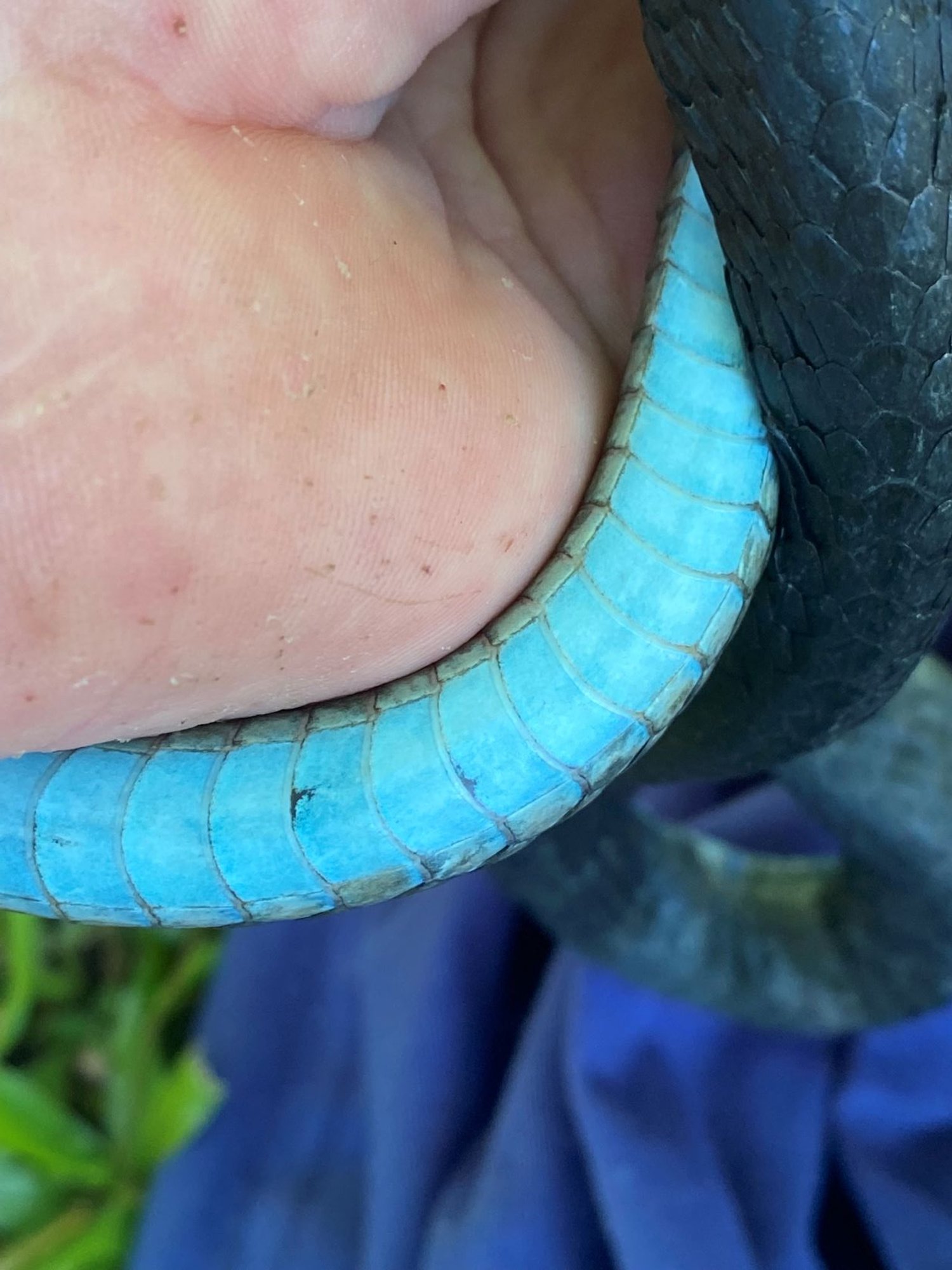Green Tree Snake (Dendrelaphis punctulata)
Other common names: Common Tree Snake
Toxicity: Non-venomous, reluctant to bite.
Description: Long thin body with thin neck and a distinct head with large eyes. Depending on the region, colours vary from olive green to bluish green to blue. Green Tree Snakes in the Tweed do not show the vibrant blue colours that occur further north, hence they are most commonly referred to as Green Tree Snakes rather than Common Tree Snakes. Green Tree Snakes in the Tweed are a light olive green through to almost black. When the snake is threatened, it puffs itself up revealing flecks of blue skin between the scales. The underside is always yellow. Green Tree Snakes can grow to 2 metres in length, although adults are generally around the 1 metre mark.
Adult Green Tree Snakes commonly have lumps under their skin along the body. The lumps are parasitic thread-worms the snake has picked up through eating frogs. The Green Tree Snake seems to be able to tolerate these thread-worms.
Green Tree Snakes are in the Colubrid family of snakes that includes the Brown Tree Snake and Keelback.
Blue Phase: Blue Phase Green Tree Snakes are a genetic variation where the normal colouring is replaced by blue scales that can be quite vivid and stunning. Blue Phase snakes are rare; the only one I have encountered in the Tweed was completely black with light blue belly scales along the first third of it’s body, changing to blue blotches on the second third.
Yellow-bellied Black Snake: There are a few species of Australian snakes that are occasionally referred to as a Yellow-bellied Black Snake. In our region, the Green Tree Snake fits the bill. Some individuals have a very dark body. Dead Green Tree Snakes on the side of the road appear almost black on top, retaining the yellow belly.
General habits: The Green Tree Snake is a strong climber that also hunts on the ground. It is active during the day, moving swiftly and gracefully. The Green Tree Snake raises it’s head and sways from side to side in response to any perceived movement. The swaying gives the snake an accurate sense of distance.
Diet: Lizards, frogs, tadpoles, mice, eggs.
Locally: Found in all locations in the Tweed. Green Tree Snakes have adapted well to the urban environment although they are not commonly found around a house to the same extent as the Brown Tree Snake or Coastal Carpet Python.
Reproduction: Lays between 5-12 eggs.
Blue skin showing between scales as light coloured flecks on body
Tasting the air
Light blue belly of a Blue Phase Green Tree Snake found at Uki
Lumps are parasitic thread-worms living just beneath the skin





